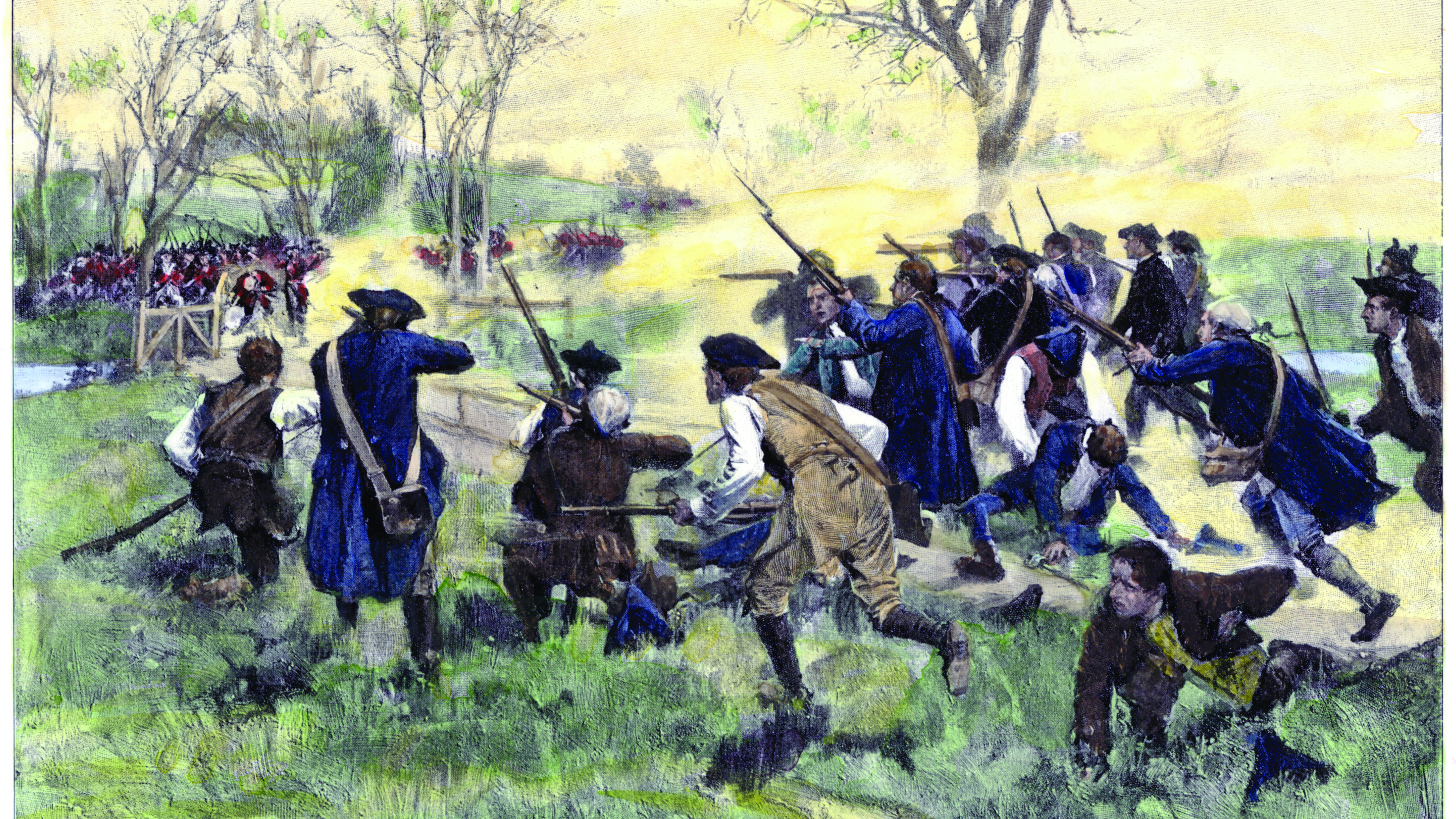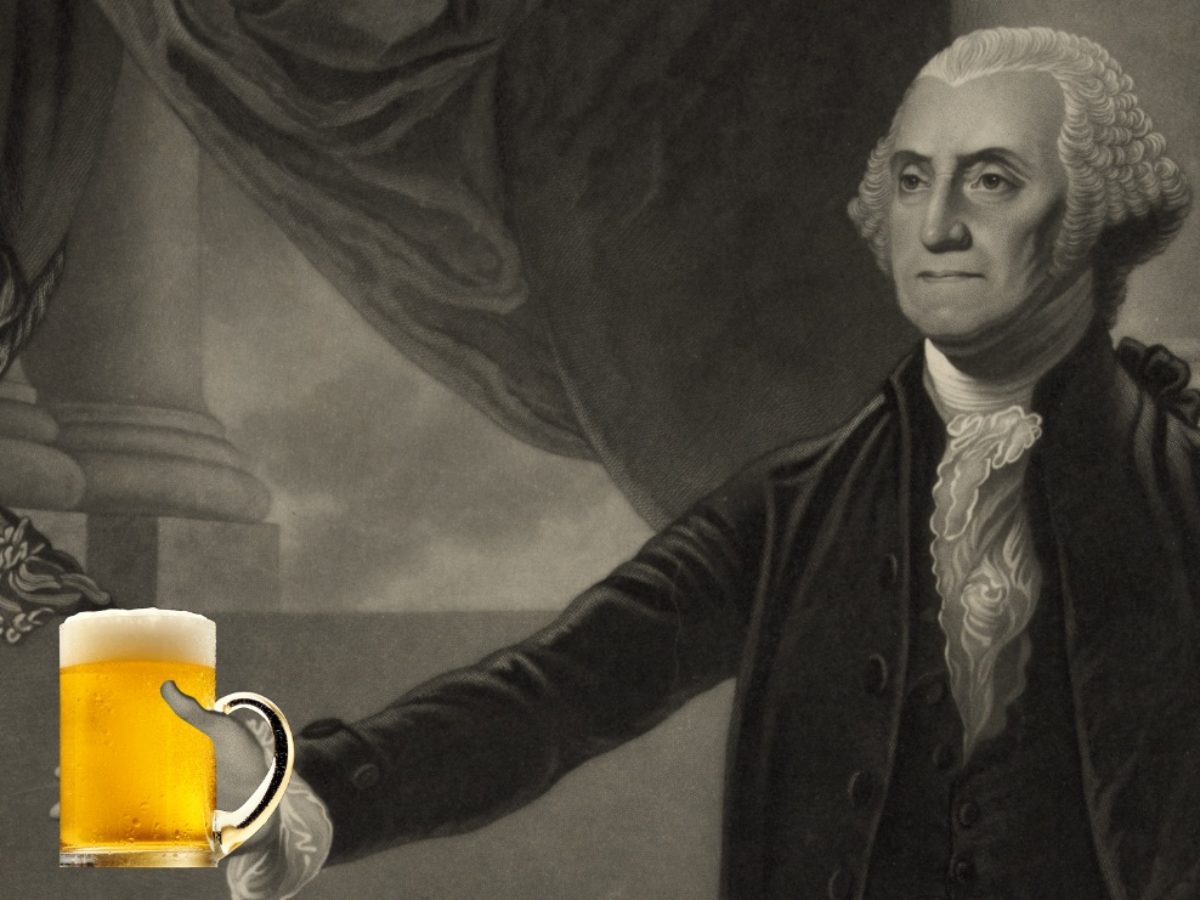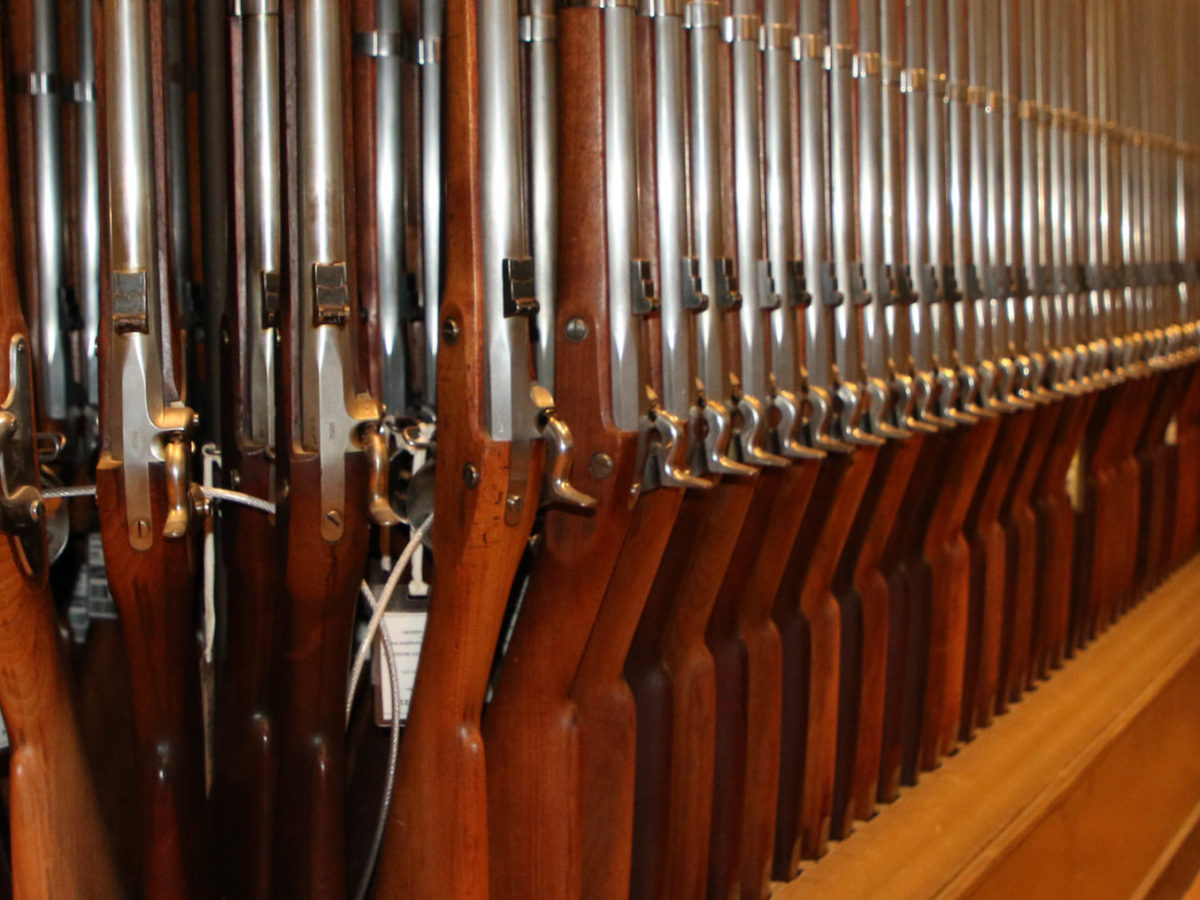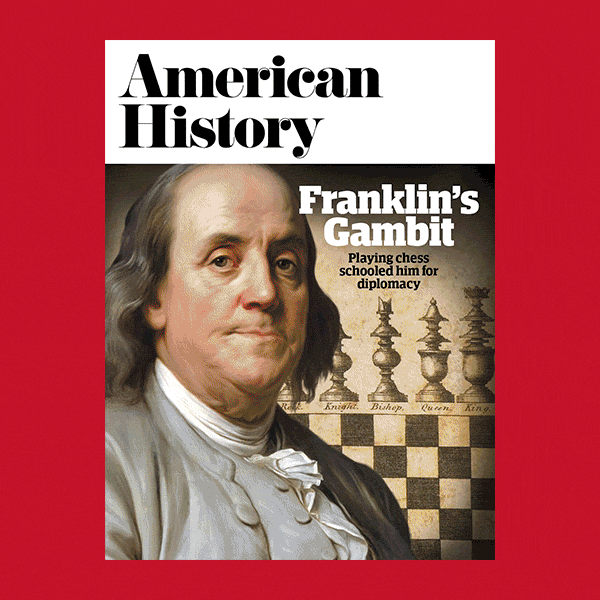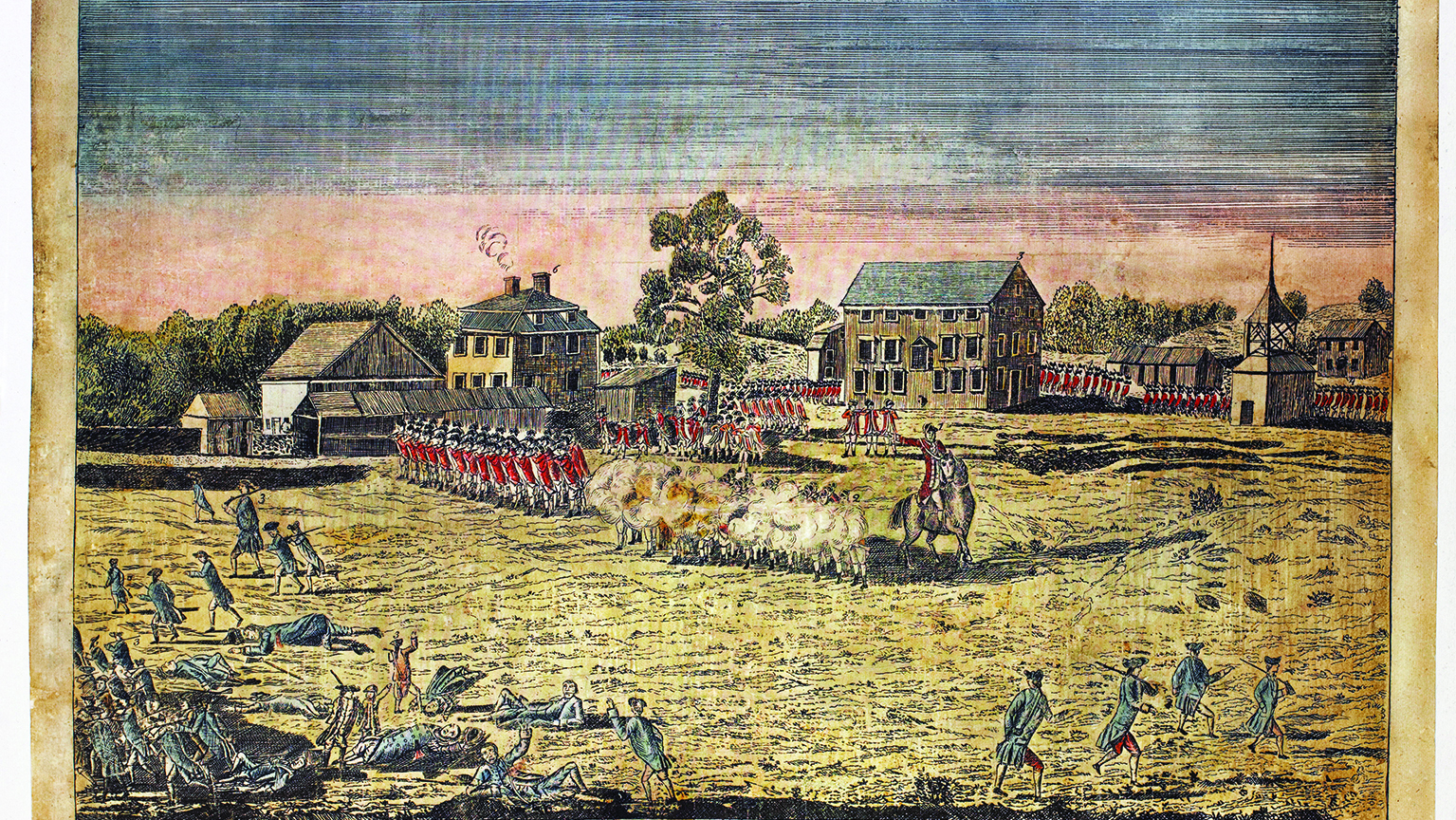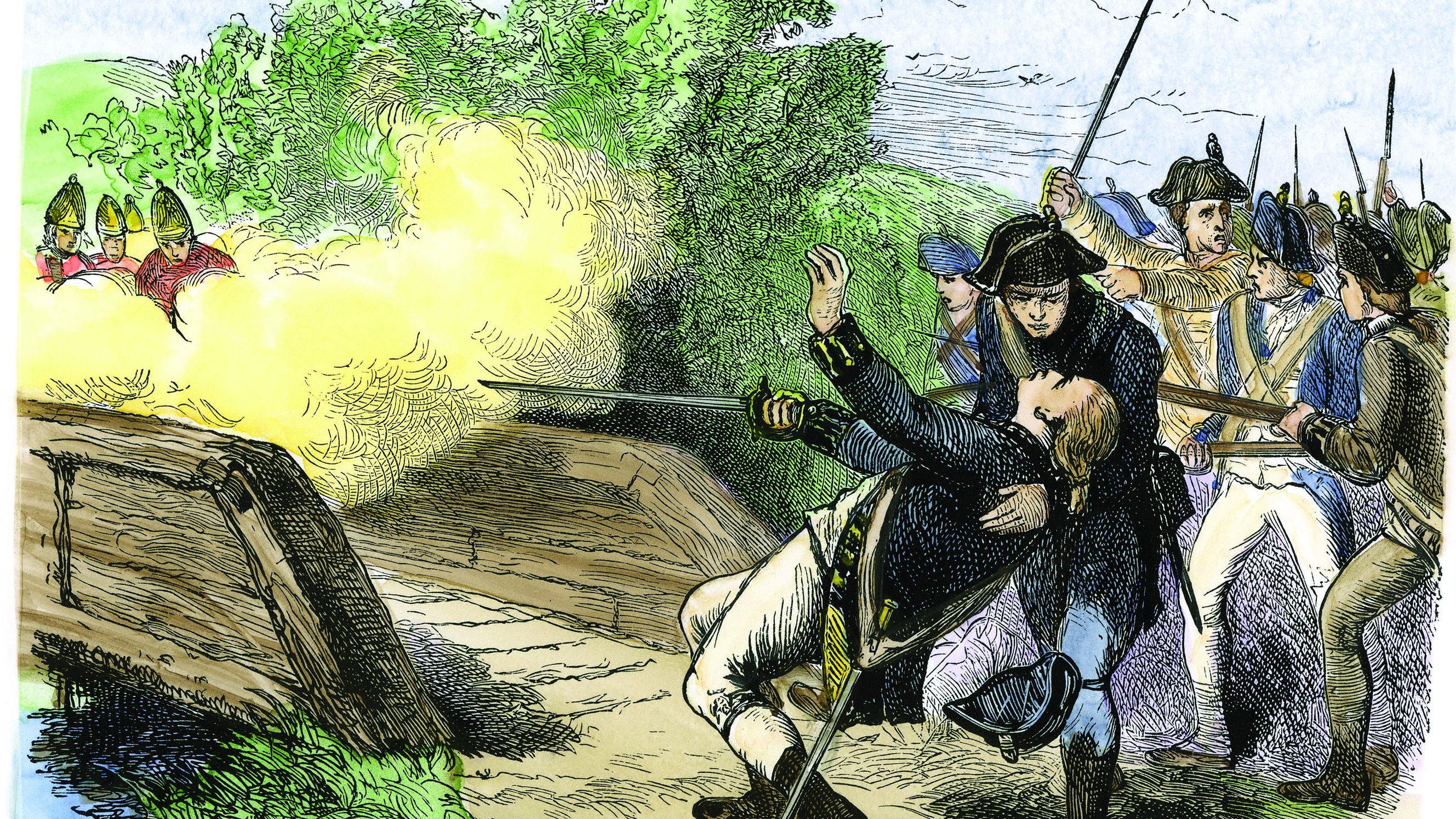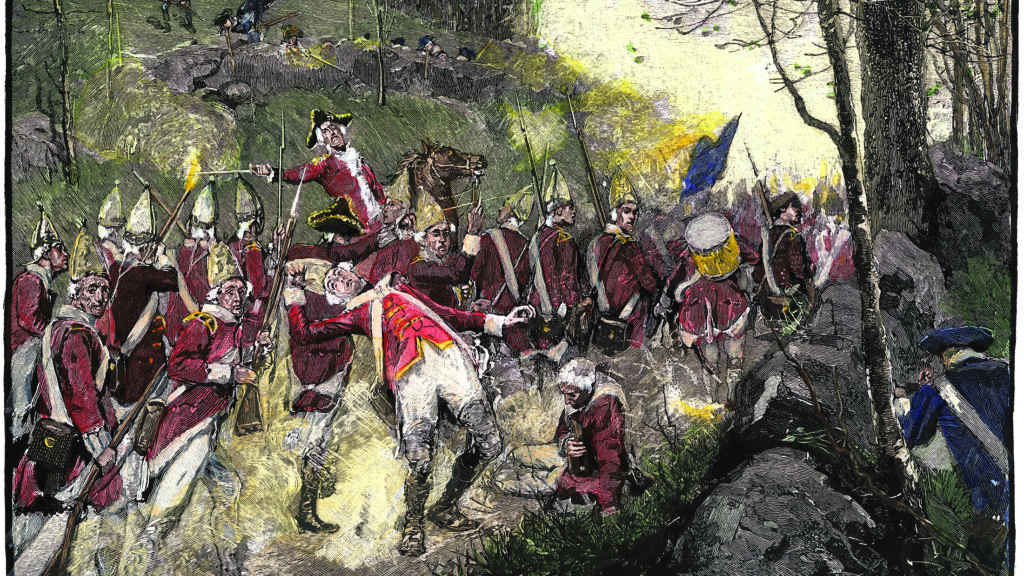Shadows scuttled beneath the elm and linden trees along Boston Common. Hoarse whispers carried on the night air, along with the creak of leather and the clatter of a stone kicked down a lane. It would later be reported that a barking dog was bayoneted to enforce the silence. Not until the moon rose at ten p.m. on Tuesday, April 18, 1775, three nights past full but still radiant, did shape and color emerge from the hurrying gray figures to reveal hundreds of men in blood-red coats congregating on the beach near the town magazine. Moonglow glinted off metal buttons and silvered grenadiers’ tall bearskin caps. The soldiers reeked of damp wool and sweat, mingled with the tang of the brick dust and pipe clay used to scour brass and leather. Their hair had been greased, powdered, and clubbed into queues held with leather straps. The moon also gave tint to the facings on their uniform coats—purple or green, buff or royal blue, depending on the regiment from which each man had been plucked for the march to Concord.
Recommended for you
The navy had collected only 20 longboats and would need two lifts to shuttle all 800 men to marshy Lechmere Point, a mile across Back Bay. Sailors bent to their ash oars against the tide, and with every stroke the standing soldiers swayed. Each man’s kit included the 11-lb. Brown Bess musket, three dozen rounds of ammunition in a cartridge box, and a haversack to carry bread and salt pork. Beneath heavy coats and crossbelts the men wore wool waistcoats, white linen shirts, breeches buckled at the knee, and canvas or linen gaiters to keep pebbles from their low-topped brogans. Most wore black leather caps or felt hats with the brim stitched up to give a forepeak and two comers. By neck cords at officers’ throats hung gorgets—small silver or gilt crescents worn as an emblem of rank, a last remnant of medieval armor. Loading was haphazard, and as the soldiers clambered from the boats to wade through the reeds on the far shore, sergeants hissed and clucked to reassemble the ten discomposed companies of light infantry and 11 of grenadiers. “We were wet up to the knees,” a Lieutenant Barker later reported. Midnight had passed by the time the second lift arrived, and further delays followed as navy provisions in the boats were handed out—supplies that, Barker added, “most of the men threw away.” Fording a shallow inlet on the edge of Cambridge further wetted each shivering man to his waistcoat, but at last the troops reached the wide road leading west, unpaved except for napped stones and gravel shoveled into mud holes.
Destination: Unknown
Few knew their destination. Two a.m. had come and gone as they put on speed. With their wet shoes squelching at more than 100 steps per minute, their pace approached four miles an hour. Past apple and plum orchards they tramped, past smokehouses and cider mills and oblique driftways that led into cow pastures. The heavy footfall rattled pewter dishes on dressers and in cupboards, and an eight-year-old boy later recalled a wondrous sight on the road outside his window: a long bobbing column of red, “like a flowing river,” sweeping northwest beneath the gibbous moon.
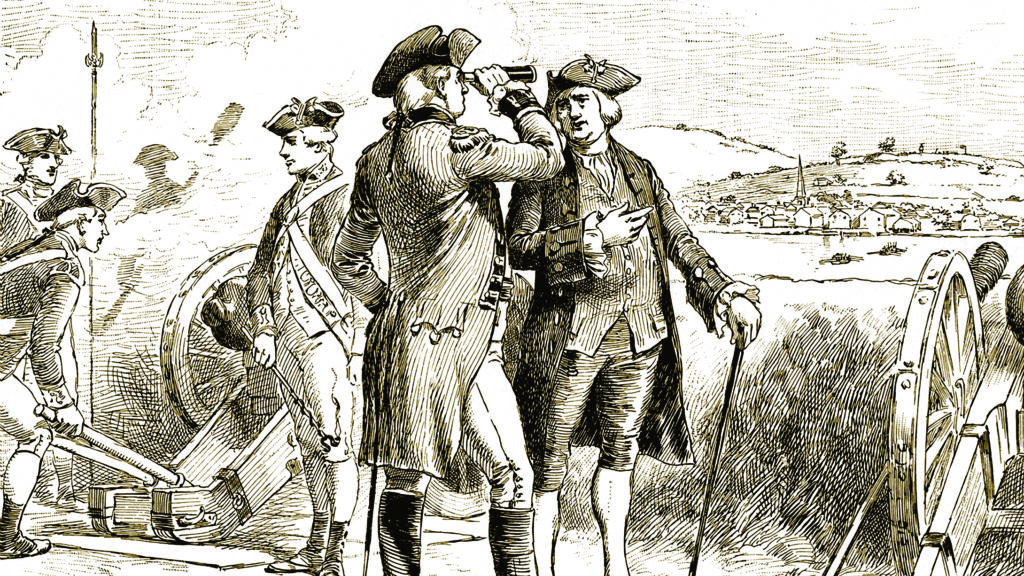
A brigade of armed men tiptoeing through Boston in the middle of the night had not gone unnoticed. “The town,” a British fusilier acknowledged, ‘‘was a good deal agitated.” Joseph Warren may have watched the mustering troops; he lived in a rented house on Hanover Street, barely a mile from the foot of the Common, and several companies had made for the boats from his North End neighborhood. Regardless, Warren was soon well informed. Two weeks earlier, the provincial congress had agreed that an enemy force exceeding 500 men leaving town with baggage and artillery ought to be considered a threat to the province and met by an assembled “army of observation . . . to act solely on the defensive so long as it can be justified.” This British force, even without heavy guns, was threatening enough for Dr. Warren. Before the first boats pulled off the Boston beach, he had summoned two couriers to carry the alarm to Samuel Adams and John Hancock, holed up in a Lexington parsonage, and to alert the wider countryside.
The first herald was a beefy, slab-jawed tanner in a slouched hat. William Dawes Jr., barely 30, still lived in Ann Street, where he had been raised by Puritan stock so strict that children were forbidden to look out a window on Sundays and the instructive School of Good Manners advised, “Let thy recreations be lawful, brief, and seldom.” Dawes had overcome such constrictions to become an adept smuggler, a patriot messenger, a militia adjutant, and an intelligence agent; while surveilling British officers, he supposedly sometimes posed as a vegetable peddler, sometimes as a miller, sometimes as a drunk. At Warren’s instruction, Dawes would ride through the Boston Neck gate on a “slow-jogging horse,” then loop northwest through Cambridge, rousing households on the way to Lexington.
The second herald had already proved his value as a trusted courier in nearly a dozen rides to New York, Philadelphia, New Hampshire, and, twice this month, Lexington and Concord. Various newspapers had often mentioned Paul Revere over the past year because of dispatches he carried hither and yon from Boston; he had, as the historian David Hackett Fischer would write, “a genius for being at the center of great events.” Now 40, with the brown eyes of his French Huguenot forebears, a broad, ruddy face, and the sinewy arms of a metalworker, Revere had run his own business as a silver- and goldsmith for more than 20 years—making teapots, mending spoons, inventing alloys, and setting false teeth, including two for Dr. Warren. He had become a skilled copperplate engraver, a concocter of allegory and caricature, who also made plates for playing cards, broadside illustrations, and paper money. For all Revere’s legendary bravura, his life was stained with tragedy: he would father 16 children, his “little lambs,” and most would die before their time.
Going to Church
This was his time. After a brief consultation with Warren, he hurried to his nearby house in Clark’s Square, snatched his riding boots and a long surtout, then picked his way through twisting North End alleys to the waterfront. Two confederates waited with a dinghy. Softly they rowed from the wharf, against the young flood and under that old moon, with a temperate breeze stirring out of the southwest. Ahead loomed HMS Somerset, a 70-gun ship of the line anchored as a sentinel in the ferryway between Boston and Charlestown in water so shallow the vessel could barely swing at anchor. Some Somerset crewmen were manning the longboats at Lechmere Point or working her pumps; an inspection this week had showed the man-of-war to be in desperately poor repair—seams rotten, butt ends open, long overdue for caulking and sheathing in Halifax. Whether distracted or sightless, the watch failed to spot the small boat that scooted past the big craft’s stem and on to the Charlestown shore.
In 1775, America had more than 3,000 churches, representing 18 denominations, but none was more important on this April night than Christ Church on Boston’s Salem Street. Known as Old North, the church featured eight great bells cast in England, a magnificent quartet of hand-carved wooden angels perched above the nave, and a towering steeple, long a landmark for navigators entering the harbor and featured in a Boston panorama engraved by Revere the previous year. As carefully planned earlier in the week, another confederate—Revere identified him only as “a friend”-climbed 154 stairs and a rickety ladder to a window in the steeple’s north face, lugging two lanterns of tinned steel with glass panels, pewter finials, and metal rings for hanging or carrying. For plainspun Boston, the lanterns—at least the one that has survived—were fancy artifacts: 14 inches high, six inches wide and deep, with 200 perforations in the top, arranged to throw exquisite shadows shaped as circles, diamonds, and Maltese crosses. Flint and steel soon lighted the candles, and twin gleams could be seen across the harbor. As Revere intended, rebel leaders beyond the Charles now knew that British troops were on the move via Back Bay—two if by sea—rather than taking the more circuitous, one-if-by-land route through Roxbury.
Dramatic as the signal was, and as enduring in American iconography, it proved superfluous, since both Dawes and Revere eluded British patrols to spread the word themselves. Handed the reins to a big brown New England mare, Revere swung into the saddle and took off at a canter across Charlestown Neck, rider and steed, hooves striking sparks, merging into a single elegant creature, bound for glory.
Two hours later, Revere trotted into Lexington, his mount lathered after outgalloping a pair of British commander General Thomas Gage’s equestrian sentinels near Charlestown. Veering north toward the Mystic River to avoid further trouble, Revere had alerted almost every farmstead and minute captain within shouting distance. Popular lore later credited him with a stirring battle cry—”The British are coming!”—but a witness quoted him as warning, more prosaically, “The regulars are coming out.” Now he carried the alarm to the Reverend Jonas Clarke’s parsonage, just up the road from Lexington Common. Here Clarke had written 3,000 sermons in 20 years; here he called up the stairs each morning to rouse his ten children—“Polly, Betsey, Lucy, Liddy, Patty, Sally, Thomas, Jonas, William, Peter, get up!” And here Clarke had given sanctuary, in a bedroom to the left of the front door, to the renegades Hancock and Samuel Adams.
A squad of militiamen stood guard at the house as Revere dismounted, spurs clanking. Two warnings had already come from the east: as many as nine mounted British officers had been seen patrolling Middlesex roads, perhaps “upon some evil design.” At the door, a suspicious orderly sergeant challenged Revere, and Clarke blocked his path until Hancock reportedly called out, “Come in, Revere, we’re not afraid of you.” The herald delivered his message: British regulars by the hundreds were coming out, first by boat, then on foot. There was not a moment to lose.
Thirty minutes later, Dawes arrived with the same warning, and the two riders soon swung toward Concord. As Adams packed to move deeper into the countryside, Hancock lumbered about the parsonage with his sword and pistol, prattling on about making a desperate stand until he, too, was persuaded to bolt for safety in his fine carriage.
The Lexington bell began to clang in the wooden tower hard by the meetinghouse. More gallopers rode off to rouse half a hundred villages. Warning gunshots echoed from farm to farm. Bonfires flared. Drums beat. Across the colony, in an image that would endure for centuries, solemn men grabbed their firelocks and stalked off in search of danger, leaving the plow in the furrow, the hoe in the garden, the hammer on the anvil, the bucket at the well sweep. This day would be famous before it dawned.
Lexington spread across 10,000 acres occupied by 750 people and 400 cows. Hardwood copses separated fields and pastures, and many small creeks snaked toward the distant Charles and Mystic rivers. Two cleared acres had been given over to the town Common, where the 11-mile road from Charlestown approached straight and level for the final 500 yards, then forked at the three-story meetinghouse, big and homely as a barn, before continuing the six miles to Concord. On these two acres some 130 militiamen, summoned by that insistent pealing, milled, stamping their feet against the nighttime chill. They awaited orders from their captain, John Parker, described as “a great tall man . . . with a high, wide brow.” A farmer, father of seven, and sometime town assessor, Parker, 45, had fought as a sergeant in the French and Indian War at Louisbourg and Quebec. Shadows falling across the Common deepened the dark sockets around Parker’s eyes, symptomatic of the pulmonary tuberculosis that would kill him that September.
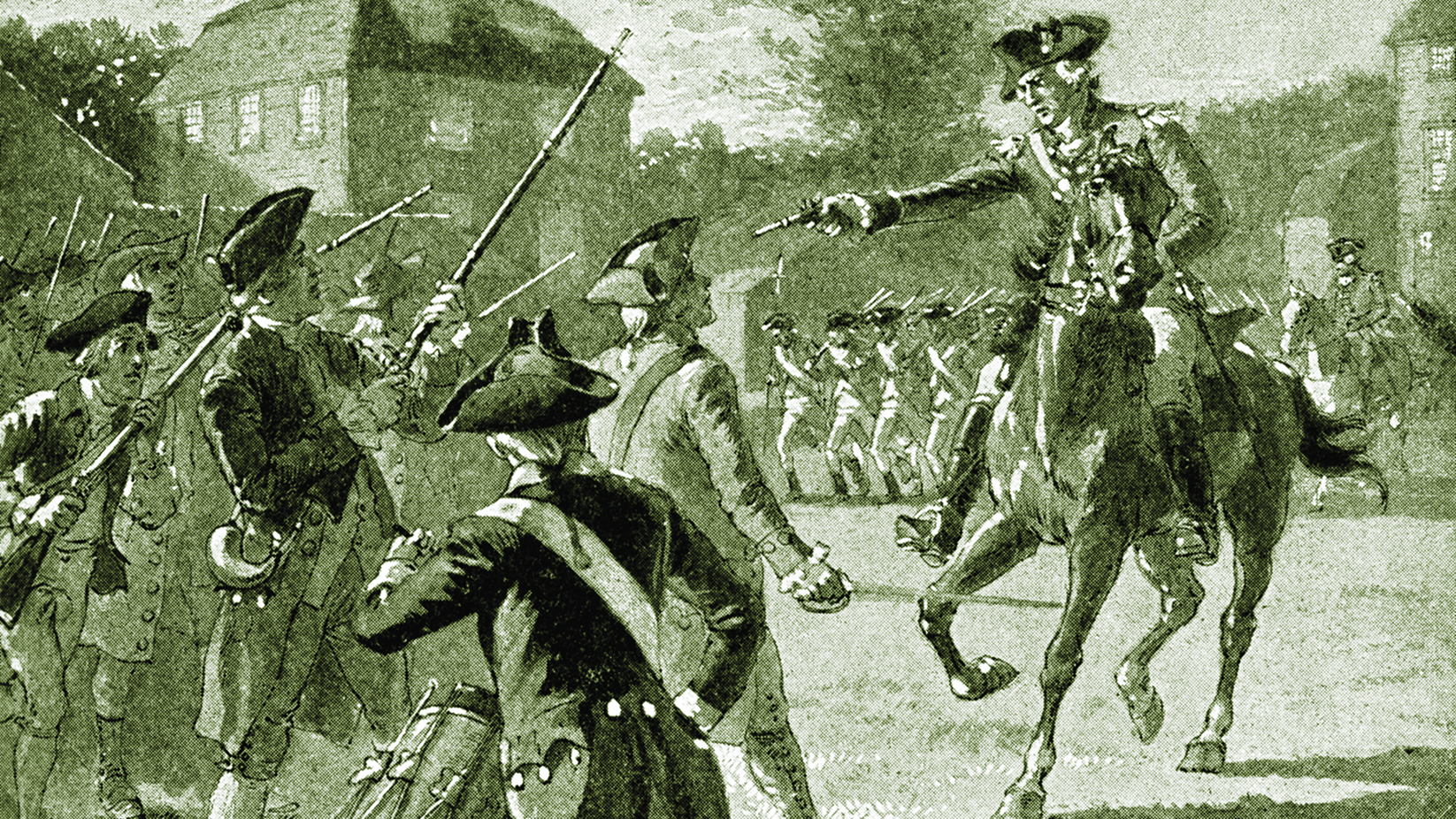
regimented life
Massachusetts Bay had been the first colony to form its militia into regiments, one per county in 1636, in an effort to fashion a military organization suitable for more than haphazard local defense. Each generation since had gone to war at least once; an estimated one able-bodied Massachusetts man in four had served in the last French war. Some militia units were little more than armed rabble, saluting unsuspecting officers by firing blank charges at their feet or sneaking up on young women before shooting into the air in a weird courtship ritual. Lexington’s troops, ranging in age from 16 to 66, were more disciplined; under militia rules, any man interrupting the clerk while he called the roll was fined two shillings. The town had no minute company but had voted money for drums, a carriage to bury the dead, and gunpowder, now stored in the meetinghouse.
A scout dispatched in search of redcoats returned around 3 a.m. to advise Parker that none could be found. Perhaps this was another false alarm, or a British feint. Rather than keep his men out in the cold to no purpose, the captain dismissed the company with orders to reassemble at the sound of a drum. Some men ambled home. Most headed to the red-doored Buckman Tavern, an ancient “public house of entertainment” with a double hip roof on the edge of the Common. Here they could find a crackling fire and a mug of warm flip, heated at the hearth with a hot iron.
Parker’s scout had not ventured far enough east. The British were coming on hard, spurred by the distant pop of warning shots and the gleam of alarm fires flaring on the horizon. Lieutenant Colonel Francis Smith, the expedition commander, had heeded Gage’s order to lunge for the Concord River bridges with a “party of the best marchers”; six light infantry companies now hurried ahead of the main column. Assured by a passing teamster that a thousand rebels were in arms, Smith also sent a courier to Boston to plead for reinforcements, a wise impulse.
The vanguard making for Concord was led by John Pitcairn. Not only was Major Pitcairn, a marine, on horseback and far from the sea to which he was accustomed—he was commanding more than 200 men from a half dozen army regiments to whom he was a stranger. The Scottish son of a Fifeshire minister, in his 50s portly and affable with heavy brows and full lips, Pitcairn could usually be found in Old North Church on Sundays, although his weekday profanity was described as “a Boston legend.” He did not extend his geniality to rebels, who deserved only “severe chastisement.” “If l draw my sword but half out of my scabbard,” he had asserted, “the whole banditti of Massachusetts will run away.” The major, an American clergyman later suggested, was “a good man in a bad cause.”
Morning comes
As an apricot glow began to brighten the eastern sky soon after 4 a.m., the sounds of a country folk alert and alarmed intensified—bells, shots, distant hoofbeats. Pitcairn ordered his troops to halt and load their weapons, a portentous command. With practiced motions, each soldier plucked a paper cartridge from his waist pouch, bit open an end, dribbled some powder grains into the musket flash pan, then poured the rest—close to half an ounce—down the muzzle, followed by the bullet and the cartridge wadding, which he tamped home with a steel ramrod. There was nothing precise about the Brown Bess—that “outspoken, flinty-lipped, brazen-faced jade,” in Rudyard Kipling’s description. Imperfect barrels, imperfect balls, a lack of sights, variable powder, and windage between ball and barrel meant the musket was marginally accurate at 50 yards, hopeless beyond 100. But that hardly mattered when bullets were fired in swarms at close range. The enormous lead slug, nearly three-quarters of an inch in diameter and an ounce in heft, could stop a charging bull.
At Pitcairn’s command, the men seated their ramrods and surged forward, breathing hard, pulses pounding. The 14-inch bayonets on their muskets protruded above their heads like a picket fence. Scraps of cartridge paper, spat out, littered the road behind them.
THe British are Coming!
The British were less than two miles from Lexington when another scout brought word to Parker of their approach. A drum beat to arms, and that infernal bell tolled again. Men in Buckman Tavern set their tankards next to the guttering candles and scrambled to the Common. Other men, filling their powder horns in an upper gallery of the meetinghouse that served as the village armory, clattered down the stairs and out the door. But only half the company answered this second call, fewer than 80 men in two ranks, anxiously peering east for redcoats. “Don’t molest them,” Parker said, “without they being first.” Precisely why he chose to confront a superior force from the exposed expanse of the village lawn rather than from a nearby thicket or stone wall would never be clear. Perhaps, dying himself, Parker had lost all impulse to seek shelter. Certainly he seemed fixed on something larger than this life. When an anxious militiaman said, “There are so few of us. It is folly to stand here,” the captain replied, “The first man who offers to run shall be shot down.”
Full dawn brought the loamy smell of plowed fields and another mild, pleasant morning. The British vanguard swung into view. The tramp of heavy brogans broke the quiet as three companies veered to the right of the meetinghouse at double-quick time. Pitcairn, on his horse, led the rest of the column to the left, following the curve of the Concord road before cantering onto the Common. A guttural roar began to build in the ranks, more growl than cheer. “Soldiers, don’t fire,” Pitcairn yelled, according to a British lieutenant. “Keep your ranks. Form and surround them.” Spectators gawking from the road heard other officers yell, “Throw down your arms, ye villains, ye rebels!” and “Disperse, you rebels, immediately!” When regulars closed to within 50 yards, Parker apparently took the command to heart. As he swore in a deposition a week later, “Upon their sudden approach, I immediately ordered our militia to disperse and not to fire.”
A single gunshot sounded above the clamor, possibly a warning shot or a sniper at Buckman Tavern. Whoever fired first on the Common would remain forever uncertain, but muskets quickly barked along the British line, promiscuous shooting from agitated soldiers in a makeshift command, led by a stranger. “Without any order or regularity,” as Pitcairn later acknowledged, ‘‘the light infantry began a scattered fire…contrary to the repeated orders both of me and the officers that were present.” With each trigger pulled, flint in the falling hammer struck a glancing blow against the steel frizzen, sprinkling sparks to ignite powder in the pan, which, in turn, set off the main charge through a touchhole in the side of the breech. Brilliant yellow flame erupted from each muzzle, along with a flat boom, a belch of smoke, and that heavy lead slug moving at 1,000 feet per second. Those who outlived the day would remember the acrid smell of burning powder, the rattle of ramrods shoving home another volley, the whiz of balls that missed and the terrible thud of balls hitting home, the shouts, the screams, the puffs of dust from bullets smacking a wall, as if the stone were breathing. Billowing smoke grew so dense that soon only the upper torsos of officers on horseback could be seen clearly. One lieutenant from the 38th Foot lost control of his spooked mount, which bolted 600 yards through the village until the rider finally reined in.
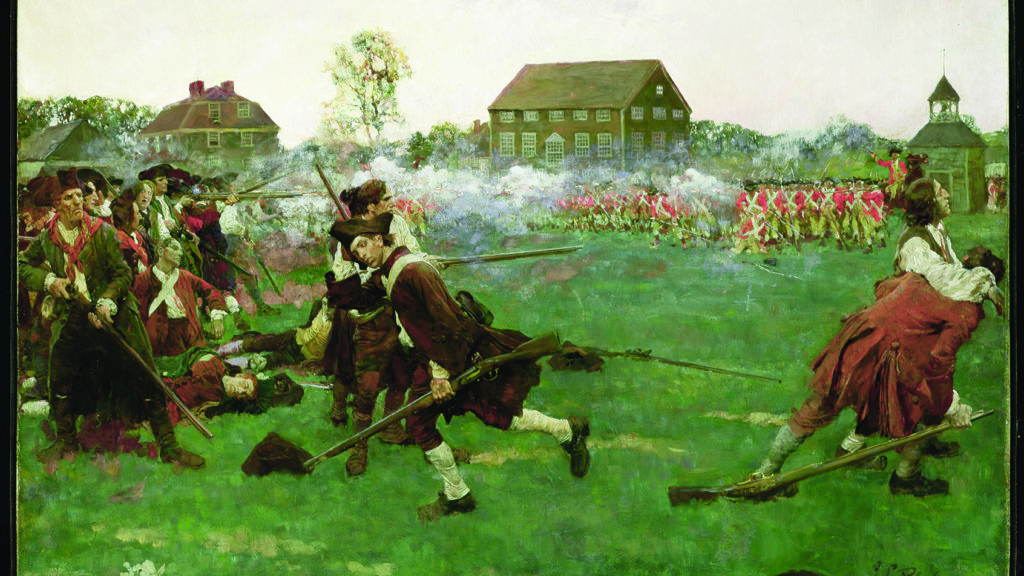
Undisciplined Attack
Few of Parker’s men managed to fire more than once, if that. Nothing was right, except the courage. Militiaman John Munroe, grazed across the cheek and with a scorch mark on his jacket where another bullet had passed between his arm and his waist, fired, retreated a short distance, then loaded his musket with a double charge, which blew off a foot of the barrel. Jonas Parker, a cousin of the captain’s, neatly placed his bullets and spare flints in a hat at his feet. A British ball knocked him to his knees, and as he fumbled to reload, British bayonets tore him dead. Pitcairn slashed at the air with his sword in a futile signal to cease fire. “Our men without any orders rushed in upon them,” Lieutenant Barker of the King’s Own told his diary. “The men were so wild they could hear no orders.”
Only when Colonel Smith cantered into the village with his grenadier companies and ordered a drummer to beat to arms did the carnage end. “I was desirous,” Smith later wrote, “of putting a stop to all further slaughter of those deluded people.” After a final sputter of gunfire, gray smoke drifted off, revealing dying lumps on the greening grass, blood and so much more leaking away.
Lexington had been not a battle, or even a skirmish, but an execution. The only British casualties were two privates, lightly wounded by gunshots, and Pitcairn’s horse, nicked twice in the flank.
The American tally was far worse. Eight rebels were dead, nine wounded. Of those slain, only two bodies lay on the original American line. Several had taken bullets in the back while dispersing, including one man captured earlier in the morning and killed while ostensibly trying to escape a hundred yards to the east. Jonathan Harrington was shot close to his house on the western lip of the Common and reportedly died on his doorstep, within view of his wife and son.
Samuel Adams, upon hearing of the gunplay, exclaimed, “Oh, what a glorious morning is this!” But Adams had not been there to see the divine clay smeared on Lexington’s green, along with the litter of hundreds of tom paper cartridges. Reverend Clarke was there, watching from several hundred yards’ distance as Smith, who had prevented his men from pillaging the nearby houses, agreed to allow them a celebratory salute. The redcoats “drew up and formed in a body on the Common,” Clarke reported, “fired a volley and gave three huzzahs by way of triumph.” Then, forming again by companies, they turned and marched west, toward Concord.
Concord was ready for them. A British mounted patrol had captured Paul Revere at a bend in the road near Folly Pond, but William Dawes managed to escape at a gallop. Continuing his charmed morning, Revere—saucy and unrepentant, even with a pistol clapped to his head—was soon released, though without his brown mare, to make his way on foot back to the Clarke parsonage. But others had carried warnings into Concord, where a sentinel at the courthouse fired his musket and heaved on the bell rope. The clanging, said to have “the earnestness of speech” and pitched to wake the dead, soon drove all fifteen hundred living souls from their beds.
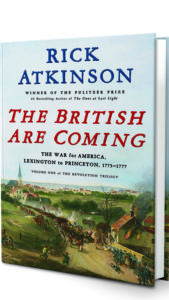
‘Like Electric fire’
Reports of shooting in Lexington “spread like electric fire,” by one account, though some insisted that the British would load only powder charges without bullets. Many families fled west or north, or into a secluded copse called Oaky Bottom, clutching family Bibles and a few place settings of silver while peering back to see if their houses were burning. Others buried their treasures in garden plots or lowered them down wells. Boys herded oxen and milk cows into the swamps, flicking at haunches with switches.
Militiamen, alone or in clusters or in entire companies with fife and drum, rambled toward Concord, carrying pine torches and bullet pouches, their pockets stuffed with rye bread and cheese. They toted muskets, of course—some dating to the French war, or earlier—but also ancient fowling pieces, dirks, rapiers, sabers hammered from farm tools, and powder in cow horns delicately carved with designs or calligraphic inscriptions, an art form that had begun in Concord decades earlier and spread through the colonies. Some wore “long stockings with cowhide shoes,” a witness wrote. “The coats and waistcoats were loose and of huge dimensions, with colors as various as the barks of oak, sumac, and other trees of our hills and swamps could make them.” In Acton, six miles to the northwest, nearly 40 minutemen gathered at Captain Isaac Davis’s house, polishing bayonets, replacing gunlock flints, and powdering their hair with flour. Davis, a 30-year-old gunsmith with a beautiful musket, bade goodbye
to his wife and four youngsters with a simple “Hannah, take good care of the children.”
“It seemed as if men came down from the clouds,” another witness recalled. Some took posts on the two bridges spanning the Concord River, which looped west and north of town. Most made for the village green or Wright Tavern, swapping rumors and awaiting orders from Colonel James Barrett, the militia commander, a 64-year-old miller and veteran of the French war who lived west of town. Dressed in an old coat and a leather apron, Barrett carried a naval cutlass with a plain grip and a straight, heavy blade forged a generation earlier in Birmingham.
Barrett’s men were tailors, shoemakers, smiths, farmers, and keepers from Concord’s nine inns. But the appearance of tidy prosperity was deceiving: Concord was suffering a protracted decline from spent land, declining property values, and an exodus of young people, who had scattered to the frontier in Maine or New Hampshire rather than endure lower living standards than their elders had enjoyed. This economic decay, compounded by the Coercive Acts and British political repression, made these colonial Americans anxious for the future, nostalgic for the past, and, in the moment, angry.
GET HISTORY’S GREATEST TALES—RIGHT IN YOUR INBOX
Subscribe to our HistoryNet Now! newsletter for the best of the past, delivered every Monday and Thursday.
Scarlet Dragon
Sometime before eight a.m., perhaps 200 impatient militiamen headed for Lexington to the rap of drums and the trill of fifes. Twenty minutes later and barely a quarter mile away, 800 British soldiers hove into view like a scarlet dragon on the road near the junction known as Meriam’s Corner. “The sun shined on their arms & they made a noble appearance in their red coats,” Thaddeus Blood, a 19-year-old minuteman, later testified. “We retreated.”
The British brigade wound past Abner Wheeler’s farm, and the farms of the widow Keturah Durant and the spinster seamstress Mary Burbeen and then the widow Olive Stow, who had sold much of her land, along with a horse, cows, swine, and salt pork, to pay her husband’s debts when he’d died three years earlier. They strode past the farms of Olive’s brother, Farwell Jones, and the widow Rebecca Fletcher, whose husband also had died three years before, and the widower George Minot, a teacher with three motherless daughters, who was not presently at home because he was the captain of a Concord minute company. Into largely deserted Concord the regulars marched, in search of feed for the officers’ horses and water for the parched men. From Burial Ground Hill, Smith and Pitcairn studied their hand-drawn map and scanned the terrain with a spyglass.
Gage’s late intelligence was accurate: in recent weeks, most military stores in Concord had been dispersed to nine other villages or into burrows of mud and manure. Regulars seized 60 barrels of flour found in a gristmill and a malt house, smashing open the casks and powdering the streets. They tossed 500 lbs. of musket balls into a millpond, knocked the trunnions from several iron cannons found in the jail yard, chopped down the liberty pole, and eventually made a bonfire of gun carriages, spare wheels, tent pegs, and a cache of wooden spoons. The blaze briefly spread to the town hall, until a bucket brigade of regulars and villagers extinguished the flames.
With the pickings slim in Concord, Colonel Smith ordered more than 200 men under Captain Lawrence Parsons to march west toward Colonel Barrett’s farm, two miles across the river. Perhaps they would have better hunting there.
Crossing a momentous Bridge
Since 1654, a bridge had spanned the Concord River just north of the village. The current structure, 16 feet wide and 100 feet long, had been built for less than £65 in 1760 by 26 freemen and two slaves, using blasting powder and five teams of oxen. The timber frame featured eight bents to support the gracefully arcing deck, each with three stout piles wedged into the river bottom. Damage from seasonal floods required frequent repairs, and prudent wagon drivers carefully inspected the planks before crossing. A cobbled causeway traversed the marshy ground west of the river.
Seven British companies crossed the bridge around nine that Wednesday morning, stumping past stands of black ash, beech, and blossoming cherry. Dandelions brightened the roadside, and the soldiers’ faces glistened with sweat. Three companies remained to guard the span, while the other four continued with Captain Parsons to the Barrett farm, where they would again be disappointed: “We did not find so much as we expected,” an ensign acknowledged. A few old gun carriages were dragged from the barn, but searchers failed to spot stores hidden under pine boughs in Spruce Gutter or in garden furrows near the farm’s sawmill.
The five Concord militia companies had taken post on Punkatasset Hill, a gentle but insistent slope half a mile north of the bridge. Two Lincoln companies and two more from Bedford joined them, along with Captain Davis’s minute company from Acton, bringing their numbers to perhaps 450, a preponderance evident to the 100 or so redcoats peering up from the causeway; one uneasy British officer estimated the rebel force at 1,500. On order, the Americans loaded their muskets and rambled downhill to within 300 yards of the enemy. A militia captain admitted feeling “as solemn as if I was going to church.”
Solemnity turned to fury at the sight of black smoke spiraling above the village: the small pyre of confiscated military supplies was mistaken for British arson. Lieutenant Joseph Hosmer, a hog reeve and furniture maker, was described as “the most dangerous man in Concord” because young men would follow wherever he led. Now Hosmer was ready to lead them back across the bridge. “Will you let them burn the town down?” he cried.
Colonel Barrett agreed. They had waited long enough. Captain Davis was ordered to move his Acton minutemen to the head of the column—“I haven’t a man who’s afraid to go,” Davis replied—followed by the two Concord minute companies; their bayonets would help repel any British counterattack. The column surged forward in two files. Some later claimed that fifers tootled “The White Cockade,” a Scottish dance air celebrating the 1745 Jacobite uprising. Others recalled only silence but for footfall and Barrett’s command “not to fire first.” The militia, a British soldier reported, advanced “with the greatest regularity.”
Captain Walter Laurie, commanding the three light infantry companies, ordered his men to scramble back to the east side of the bridge and into “street-firing” positions, a complex formation designed for a constricted field of fire. Confusion followed, as a stranger again commanded strangers. Some redcoats braced themselves near abutments. Others spilled into an adjacent field or tried to pull up planks from the bridge deck.
‘Fire, men, Fire!’
Without orders, a British soldier fired into the river. The white splash rose as if from a thrown stone. More shots followed, a spatter of musketry that built into a ragged volley. Much of the British fire flew high—common among nervous or ill-trained troops—but not all. Captain Davis of Acton pitched over dead, blood from a gaping chest wound spattering the men next to him. Private Abner Hosmer also fell dead, killed by a ball that hit below his left eye and blew through the back of his neck. Three others were wounded, including a young fifer and Private Joshua Brooks of Lincoln, grazed in the forehead so cleanly that another private concluded that the British, improbably, were “firing jackknives.“ Others knew better. Captain David Brown, who lived with his wife, Abigail, and ten children 200 yards uphill from the bridge, shouted, “God damn them, they are firing balls! Fire, men, fire!” The cry became an echo, sweeping the ranks: “Fire! For God’s sake, fire!” The crash of muskets rose to a roar.
“A general popping from them ensued,” Captain Laurie later told General Gage. One of Laurie’s lieutenants had reloaded when a bullet slammed into his chest, spinning him around. Three other lieutenants were wounded in quick succession, making casualties of half the British officers at the bridge and ending Laurie’s fragile control over his detachment. Redcoats began leaking to the rear, and soon all three companies broke toward Concord, abandoning some of their wounded. “We was obliged to give way,” an ensign acknowledged, ‘‘then run with the greatest precipitance.” Amos Barrett reported that the British were “running and hobbling about, looking back to see if we was after them.”
Battle smoke draped the river. Three minutes of gunplay had cost five American casualties, including two dead. Of the British, eight were wounded and two killed, but another badly hurt soldier, trying to regain his feet, was mortally insulted by minuteman Ammi White, who crushed his skull with a hatchet.
A peculiar quiet descended over what the poet James Russell Lowell would call “that era-parting bridge,” across which the old world passed into the new. Some militiamen began to pursue the fleeing British into Concord, but then veered from the road to shelter behind a stone wall. Most wandered back toward Punkatasset Hill, bearing the corpses of Davis and Abner Hosmer. “After the fire,” a private recalled, “everyone appeared to be his own commander.”
Colonel Smith had started toward the river with grenadier reinforcements, then thought better of it and trooped back into Concord. The four companies previously sent with Captain Parsons to Barrett’s farm now trotted unhindered across the bridge, only to find their dying comrade mutilated by White’s ax, his brains uncapped. The atrocity grew in the retelling: soon enraged British soldiers claimed that he and others had been scalped, their noses and ears sliced off, their eyes gouged out.
As Noah Parkhurst from Lincoln observed moments after the shooting stopped, “Now the war has begun and no one knows when it will end.”
historynet magazines
Our 9 best-selling history titles feature in-depth storytelling and iconic imagery to engage and inform on the people, the wars, and the events that shaped America and the world.


